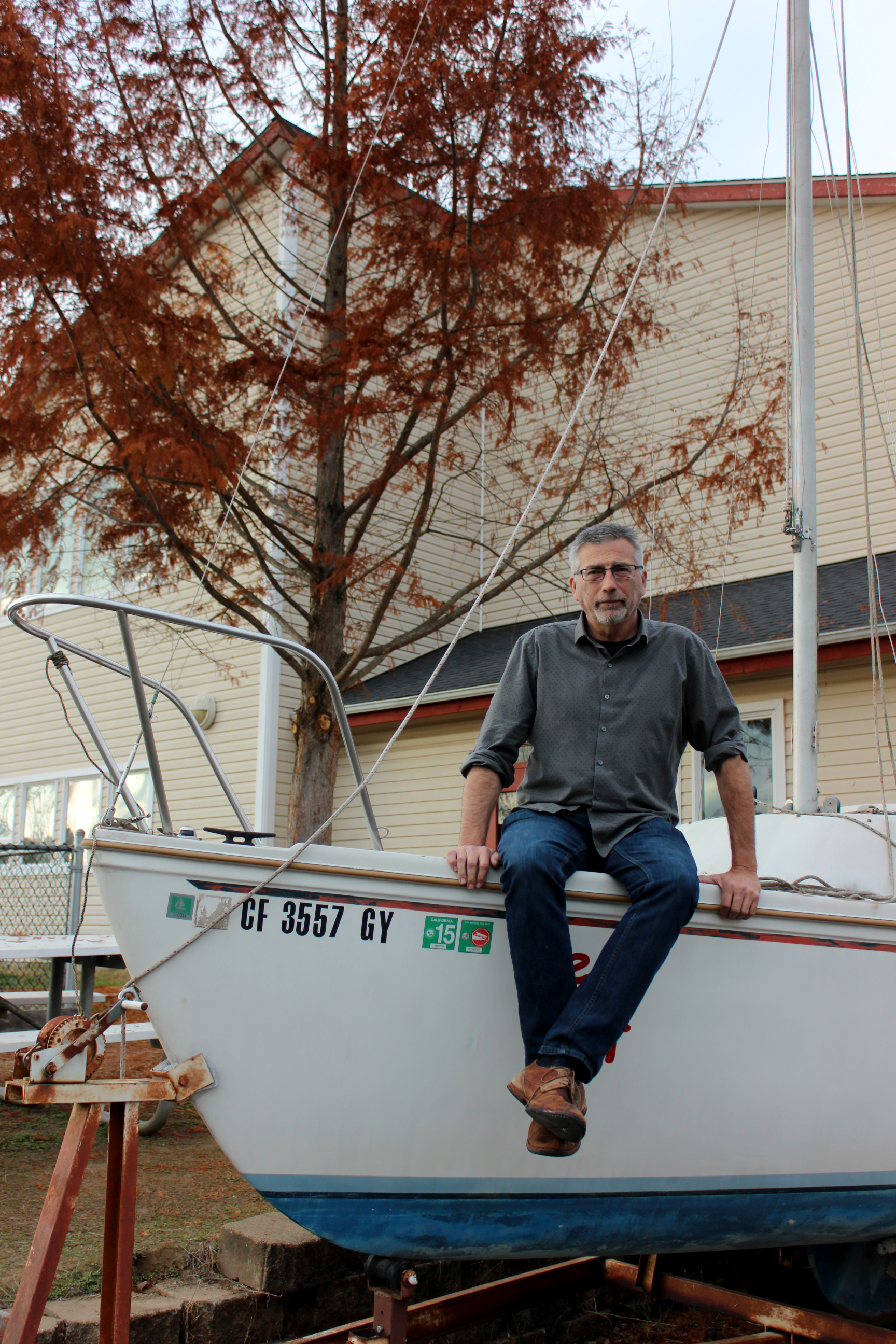Setting sail
CCL coordinator works to inspire students
There’s a 22-foot damaged Catalina sailboat sitting out back at Phoenix School of Roseburg, parked on a rusty trailer near the school’s trades and gardening worksites. A travel trailer or RV may soon join the lot.
Someone else’s junk, it turns out, is Brian Bray’s lesson plans for the industrial arts class he’s teaching at the school this year. What will be done with the derelict vehicles? Repair, dismantle, explore – either way, students will be learning about manufacturing and other trades along the way.
“I want for the students, especially as a group, to engage their imaginations, and collaborate on an idea of what we’ll do with it,” Bray said.

Brian Bray is the career connected learning coordinator for Phoenix School and the Bright Futures Umpqua initiative.
As the school’s new career connected learning coordinator, Bray is part of a team that is focusing on connecting business and industry in Douglas County with schools and students. That means he won’t just be talking about how to cook an egg in the culinary class he also teaches, but perhaps how that egg can be made into a crepe, how crepes are sold all over Europe, and how the street-corner crepe industry model functions.
Beyond the classroom – or sailboat hull – Bray works with the Bright Futures Umpqua team, an initiative of Douglas County Partners for Student Success that is primarily funded through the Meyer Memorial Trust. The mission of Bright Futures Umpqua is to expand career connected learning experiences for youth across Douglas County so they leave high school with informed and purposeful plans for their future.
“We’ve been inventing that airplane as we fly it,” said Bray, who began his new role in July.
Partnering with Phoenix, a charter school, was a natural fit. Bray is a strong supporter of alternative education programs and is no stranger to the charter model. He’s board chairman of Oregon Virtual Academy, an online charter school serving about 2,000 students statewide.
After attending the University of Oregon, Bray began his career with a major food producer in Eugene and later transitioned into the technology sector. He’s served in several technology leadership and development roles for private business and public education, eventually wading into instructional technology in schools. The combination of experiences makes Bray well-suited to lead career connected learning strategies.
“I can really have a foot in the business world, and I can really have a foot in education,” he said.
Bray most recently worked at Coburg Community Charter School, where he developed the school’s technology program and taught classes. He was excited for the chance to work in Douglas County.
“This community is really committed to this concept of growing our own good workers, good managers, good business owners, to stay here in Douglas County,” he said. “I think more than other communities, our business and industry is very well disposed to supporting this.”
For Bray and the Bright Futures Umpqua team, the work begins with raising awareness among students early on about career options and the different routes students can take to reach their goals. A model has been developed that focuses on key areas: Awareness, or learning about work; exploration, learning for work; and preparation, learning through work. Activities like career interest testing, job fairs and presentations, and worksite tours are starting points for getting students to think about the future.
Efforts also include helping students consider what type of education they may need after high school for certain careers, as well as promoting career and technical education programs in high schools to encourage youth to consider the trades.
Bray hopes in the next several years to be able to spread career-connected learning initiatives throughout Douglas County. He wants to show all students that they have the potential – and that pathways exist – to succeed after high school.
“That’s part of why I have a lot of heart for doing this and being with these kids,” he said, “because they just need to see the possible.”
Leave a Reply
You must be logged in to post a comment.